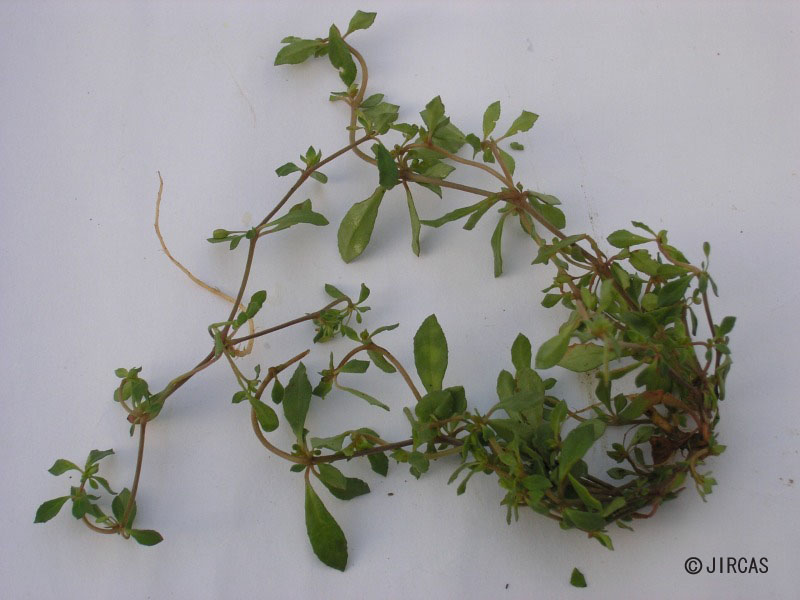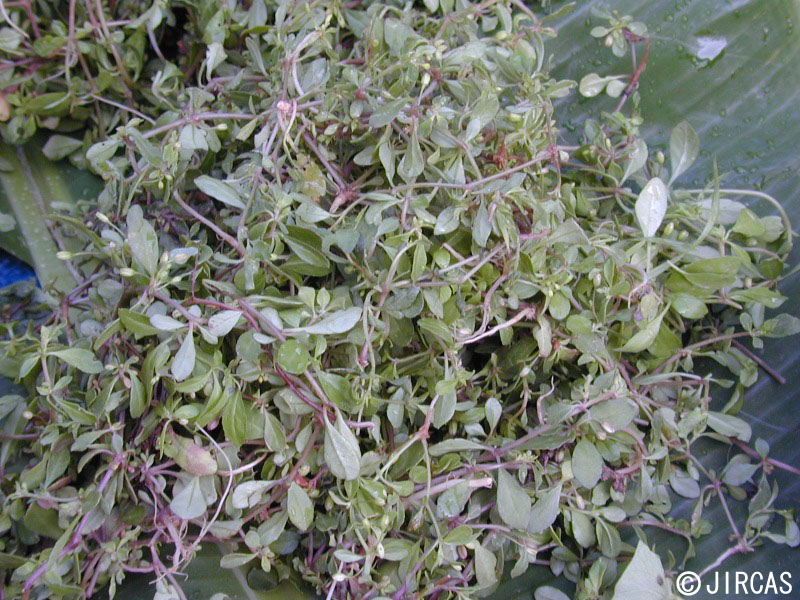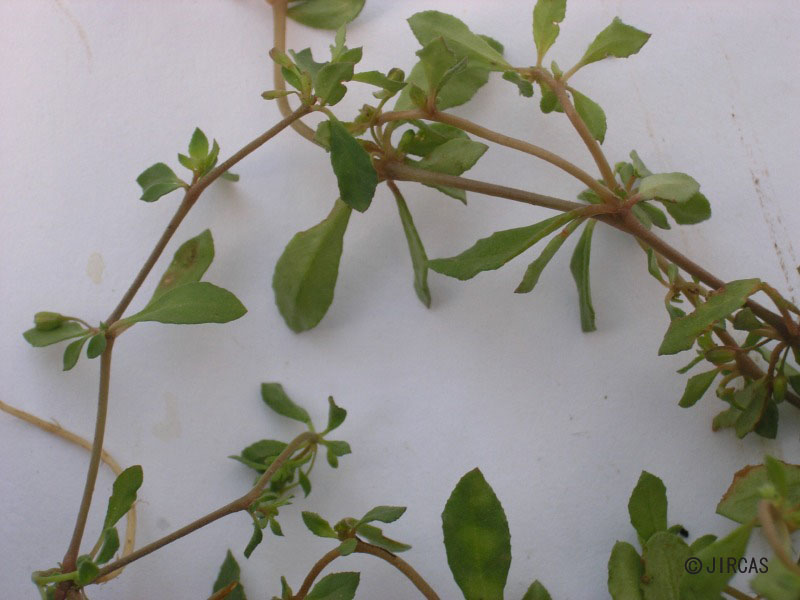Glinus oppositifolius (L.) A. DC. (Molluginaceae)
- Scientific name
- Glinus oppositifolius (L.) A. DC.
- Family name
- Molluginaceae
- Local name
- Phak khuang, sadao din, phak khee khuang, phak khom
Annual prostrate herb. Leaves simple, whorled, linear-lanceolate, 1.2–5 cm long, 2–5 mm wide; petiole short. Inflorescence axillary, cluster of 4–6 flowers. Flowers 6–12 mm long, greenish-white, with long pedicel. Fruit a dehiscing capsule, ellipsoid. Seeds numerous, reniform, 0.5 mm long.
Found as a common weed in open areas with moist soil such as rice paddies after harvest. No record of its cultivation; villagers collect shoots and leaves from wild plants for their own consumption or for sale in local markets. Propagated by seed sowing or stem cutting. Favours continuously moist soil and full sun.
Shoots and young leaves have a bitter taste. Young leaves are cooked in curries with grilled dried fish.
Shoots and young leaves have a bitter taste. Young leaves are cooked in curries with grilled dried fish.






